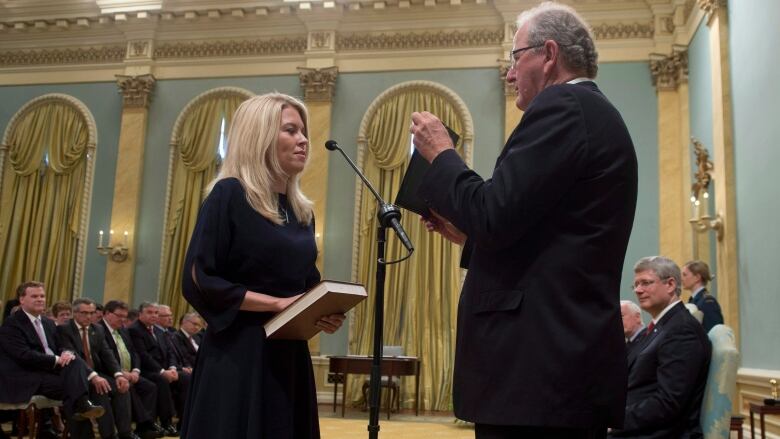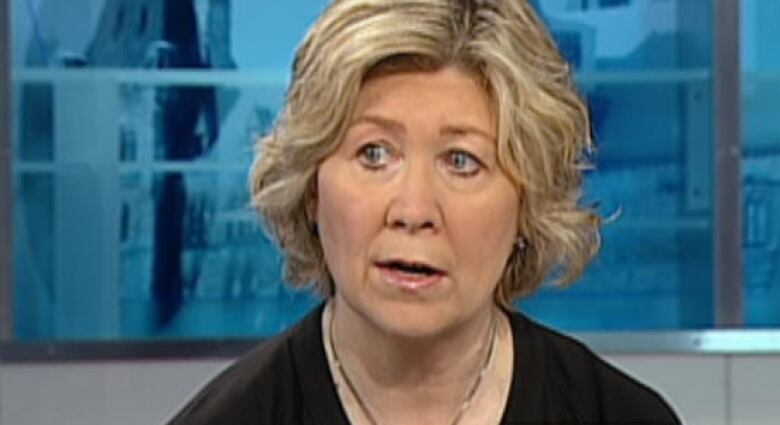2015 election: Women make up a third of candidates so far
Parties have candidates for just over half the 338 seats in the House

Women hoping to be more equally represented in the House of Commons are likely to be disappointedafter the next federal election.
With just over half the candidates nominated for the October2015 election, women are far outnumbered by men.
While the 2011 election brought a record number offemale candidates and a record number of women elected to the House, they still make up only a quarter of all MPs.
But a CBC News analysis of candidates nominated so far shows Canada is still far from hitting gender parity in federal politics.
The Conservatives have nominated women in just 19 per cent of ridings so far (34of 175 candidates nominated), while women account for 36 per cent of Liberal candidates (65 of 182 people nominated so far).
The NDP is the clear leader, with two more women nominated than men: 54 women and 52 men are set to run in 106 ridings. But the New Democrats have confirmed just 31 per cent of their candidates, compared to 52 per cent for Conservatives and 54 per cent for the Liberals.
Many of the Conservative and NDP candidates nominated so far are sitting MPs.
Women account for 25 per cent of MPs in the House right now, or77 ofthe current 308 seats. Thirty new ridings have been added for the 2015 election to increase the total seats to 338.
Women currently make up 18 per cent of the Conservative caucus. To bring their female candidate representationeven up to one-third, nearly half of the remaining candidates to be chosen would have to be women.
Women make up 42 per cent of the current New Democrat caucus and 23 per cent of the current Liberal caucus.
Championing women
At the same time, all three major parties have women running their campaigns:
- Jenni Byrne, a longtime Conservative operative and top party official, is co-chair of the federal Conservative campaign.
- Anne McGrath, a past president of the NDP, is running the New Democrats' campaign.
- Katie Telford, a former deputy chief of staff to Stphane Dion when he was the opposition leader, is helming the Liberal campaign.
The Green Party, which doesn't haveofficial party statusin the House, is the only federal party led by a woman, Elizabeth May.
A spokesman for the Conservative Party defended its slate of candidates so far.
"We look forward to adding more strong members to that team as we get closer to the election in October. It's important to note that it was Prime Minister Stephen Harper who has appointed more women to cabinet than any other prime minister in Canadian history, with a large portion of those holding senior positions in our cabinet," CoryHannsaid in an email to CBC News.

"We don't allow nominations to proceed unless the localridingshave undertaken an affirmative action search process," she said in an interview with CBC News. "They have to meet equity guidelines, which means they have to have a fair and open search process."
Telford said the Liberals' list of female candidates is strong given the party is holding open nominations. In the past, she said, a Liberal leader might increase the number of female candidates by appointing some without a contest.
One of the big challenges in electing femaleMPs is convincing women to run as candidates. Equal Voice, an organization that aims to elect more women in Canada, last month urged mento encourage women to put themselves forward.
"Do this repeatedly and, then, back them by championing them within your professional and personal networks. Far too many women spend too much time quietly nurturing their ambition forfeiting opportunities that may be available to them," the organization wrote in response to a column, written by a man, that downplayed some of the barriers women face.
"By encouraging and championing women you respect to become the candidate, more women will run."
Inviting women to run increases numbers
Equal Voice also cited a 2010 study that found the more women there were in a riding association, the more likely it was to have female candidates.
"Why? Because the women actively reached out to women. So, apart from women actually running, having more individuals on the riding association who support recruiting a diversity of candidate may help turn the tide."
Michelle Rempel, now a Conservative cabinet minister, has said she got more involved in federal politics at the urging of MP Diane Ablonczy. Kellie Leitch, another Conservative cabinet minister, was recruited by former finance minister Jim Flaherty.

The Liberals also tried out a campaign called "invite her to run," which encouraged people to tell the party about women they thought would be good candidates. Women named in that campaign received a personal email from Telford inviting them to talk to the party about running for nomination. More than 300 women were nominated for the process, including the party's eventual candidate in Whitby-Oshawa, Celina Caesar-Chavannes.
Telford said it's not just that women run when they're asked once about it, but "when they're invited and when they're invited more than once. That's actually the other key thing.It's not once or twice. It's going back again and again."
The election is expected by Oct. 19, 2015, so parties have eight months or less to finalize candidates.
Clarifications
- This story has been updated from an earlier version to add the number of Liberal and Conservative candidates nominated so far. The headline has been edited to remove "less than," as the number of women candidates nominated so far across all 3 main parties equals one third.Jan 13, 2015 11:58 AM ET












_(720p).jpg)


 OFFICIAL HD MUSIC VIDEO.jpg)
.jpg)



























































































